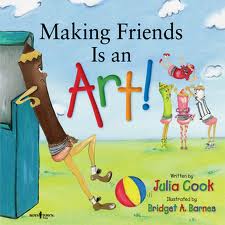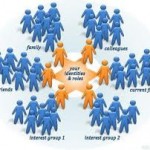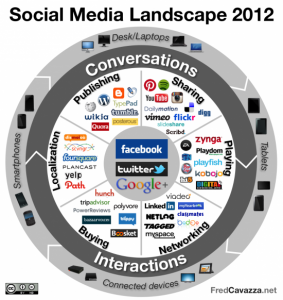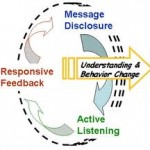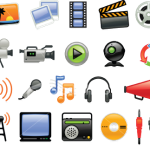Apr 12
3
Just Showing Up
80 to 90 % is Just Showing Up
Woody Allen has been quoted as saying that 80 to 90 % of success is due to “just showing up.” Apparently this quote is controversial, as I found out when I searched for it. Some people think that “just showing up” is not to be applauded. They say that we should strive to make a positive difference by contributing more value than our mere presence would provide.
I can understand the different opinions about the value of merely “showing up.” However, I have experienced many circumstances wherein being in the right place at the right time made all the difference. In fact, I have often stated in training before large audiences that “if you want to get lucky and be in the right place at the right time, BE IN A LOT OF PLACES.”
Serendipity
I remember two examples of situations where being there was extrememly valuable. (By the way, I really like the movie, “Being There,” with Peter Sellers and Shirley McLaine.)
In the 1990’s I attended the first presentation in our city of a new network marketing business. It was held at a Holiday Inn. I went to find out what it was all about. I happened to bump into an acquaintance in the men’s room at the hotel. I asked him if he was there for the presentation, and he said no. I invited him to attend it with me. We both signed up, him under me, and we built one of my top five legs under him. We both made five figure monthly incomes from that leg, and he became one of my three top leaders.
Right Place at the Right Time
I met one of the other top leaders among my top five front line in that business in a parking lot where I recognized his name on the license plate of his Lincoln Town Car. Formerly I had noticed his name in a directory of a barter organization I belonged to. I approached him (took action) and invited him to have coffee at a local restaurant. I could go on and on… All of the other three top leaders on my front line were met in similar “lucky” situations. I knew NONE of them before. By helping those five succeed, I earned approximately $500,000.00 gross income in the next four years from the $15,000,000.00 collective sales of the 17,000 people who came into our networking business under those five lucky “strangers.”
Serendipity is a major factor in the success of many “winners.” If they are honest, most highly successful people, like Bill Gates, will tell you that luck had a lot to do with their success. But Bill also commented that he was not the only one in that place at that time. He recognized the opportunity and he acted on it. It has been said that success happens when preparation meets opportunity.
Synchronicity
Recently I showed up for a business networking “meetup” at a nice restaurant. The only problem was that the organizer did NOT show up. My wife and I were the only people who showed up. Fortunately we benefited from serendipity and were rewarded for showing up when we found ANOTHER DIFFERENT networking group meeting at the same place at the same time. We did NOT go home disappointed. We adjusted our “sails” and took advantage of the situation in which we found ourselves. It turned out that by a fortunate “accident” we were in the right place at the right time. We met some like-minded influential entrepreneurs who resonated with our philosophy, and we were very glad to have been there to meet them. “We cannot change the direction of the wind, but we can adjust our sails.”
“Serendipity is the faculty of finding things we did not know we were looking for,” said Glauco Ortolano. Business is transacted between people, and it helps to go out and circulate among the people. Make it a point to be in a lot of places. Sometime you will find yourself in the right place at the right time. If you are prepared and recognize the opportunity, you may be as lucky as Bill Gates.
Posted in Business Relationships Social Media Relationships Uncategorized by .
Feb 12
5
Opportunity Cost
Opportunity Cost
Choosing one path has kept us from another. The difference is called “Opportunity Cost.” As we reflect on our past, we may say, “Gee, I’m glad I did!” or “Gee, I wish I had…” John Greenleaf Whittier wrote, “For all sad words of tongue and pen, the saddest are those “It might have been”. Choices yield consequences and ramifications that may last a lifetime.
Socrates sought genuine knowledge. Even in debates, he pursued truth open-mindedly, rather than mere victory over an opponent. He famously said, “The unexamined life is not worth living.”
Karl W. Palachuk wrote an interesting article about the subject in his blog, “Relax, Focus, Succeed.” Here is an excerpt:
When you set aside time to examine your life, You get to choose your destination; You get to set the goals; You get to determine the path; You get to decide how long it will take; You get to decide whether you’re on the right path or the wrong path.
In other words, you begin to know your self and to take control of your life. You decide who you want to be and begin to become the person you want to be.
Robert Frost wrote in one of my favorite poems,
I shall be telling this with a sighSomewhere ages and ages hence:Two roads diverged in a wood, and I—I took the one less traveled by,And that has made all the difference.
I bargained with Life for a penny,
And Life would pay no more,
However I begged at evening
When I counted my scanty store;
For Life is a just employer,
He gives you what you ask,
But once you have set the wages,
Why, you must bear the task.
I worked for a menial’s hire,
Only to learn, dismayed,
That any wage I had asked of Life,
Life would have paid.
Posted in Business Relationships Personal Alliances by .
Jan 12
29
Enough is Enough
Enough is Enough!  Information Overload
Information Overload
Information overload and overwhelm are two terms that have become active in my vocabulary in the 21st century. I am a curious intellectual and a glutton for knowledge, and the internet is a smorgasbord of information. I guess I learned this from my father, who bought encyclopedias and subscribed to annual “Information Please Almanac.” As a boy I read most of the books on our home library shelves.
The Age of Overwhelm
Hunger for knowledge seemed like a good thing in the mid-20th century, when one had to physically go to the library (offline). Going to college was taken for granted in my family, and I went on to post-graduate school. In hindsight, considering the path (less traveled by) that my career has taken, college would have been more than enough.
If I read for 16 hours a day, it would take me decades to read the 1000+ books on my shelves at home. However, they sit on the shelves and gather dust, because I have fallen in love with the internet — the ultimate information overload.
Capturing and Storing Information on the Web
On the web, you can find out more than you ever wanted to know about anything and everything. I feel like I am almost drowning in the quicksand of information overload! My hard drives have been relieved lately by my use of “cloud storage.”
MediaFire gives you the most for free ( 50GB ) but your uploads will be limited to a mere 200MB.
If you just want an inexpensive service that can be upgraded, Google Drive has a good mix of the features you want. It’s got the main bases covered with clients for PC and Mac, apps for iOS and Android, and a web manager. Its free 5GB is enough for a start, and its upload size is only limited to a huge 10GB per load, which should cover most of your stuff. For only $2.50 a month ($30 a year) you can get 25 GB, and for $5.per month you get 100GB.
Evernote lets you Organize, Synchronize, Search, and Access from the Cloud as well as Multiple Devices
I do use Evernote, and I recommend it for those who want to store ALL KINDS of information, including notes, webpages, URL’s, and multimedia. Benefits include cloud storage and synchronization with multiple computers and keyword search and tags.
Social Information Management
Social networks and blogs constantly compete for my attention, and email — fuh-gedda-bout-it! Opt-in email “newsletters” have swamped my email accounts, and it would probably take many years to read all the content that is already stored on my several gmail accounts. Unlimited storage on Google and Yahoo has spoiled me. In the old AOL days, email would be automatically deleted after limits of time or storage capacity. I used to make folders and filters for email. Now gmail says, “Don’t worry about deleting anything. We will store it all and you can search for it whenever.”
The Bookmark “Black Hole”
For years I have created thousands of browser “bookmarks.” It is VERY rare for me to go back to look at the bookmarked content, and when I switched from Internet Explorer to Google Chrome, I didn’t bother to export the bookmarks.
Multiple Tabs Open and Some Helpful Tools
When I follow a tangential link and stumble upon an interesting webpage (which happens a lot!) I tend to leave the tab open so I will not forget to go back to read it “later.” It is common for my computer to bog down with up to 20 tabs open while I continue to move on, trying to stay focused on the original topic.
reduce tab clutter in Google Chrome.” It reduces the drain on computer memory, but keeps tabs handy.
“Tip for Getting More Organized: Don’t.”
The most refreshing advice I have read lately was in an encouraging article in Harvard Business Review by Michael Schrage, a research fellow at MIT Sloan School’s Center for Digital Business, called, “Tip for Getting More Organized: Don’t.” Michael says, “When it comes to investing time, thought and effort into productively organizing oneself, less is more. In fact, not only is less more, research suggests it may be faster, better and cheaper.” Basically, his advice is to use search instead of filing.
Please help me and others who may be drowning in information overload. Please share your suggestions for coping in the comments below. They would be greatly appreciated!
Posted in Business Relationships Social Media Relationships Uncategorized by .
Jan 12
7
Communicating Love at a Distance
Love is a “many splendorous thing.” Love is best shared live and in person. Non-verbal communication enhances the whole experience. However, there are many situations in which lovers are not in the same location. Modern technology has provided many channels of communication to bridge the gaps.
One of the most wonderful new video-conferencing tools is Google Hangout , which allows you to talk face-to-face online for free with up to 10 people, who may be in 10 different locations, for as long as you like. Yesterday I used Google Hangout to broadcast a live training seminar for about 2 hours using a webcam. It was easy to broadcast and record with a webcam. Now it is stored on a free online Google server in “the cloud.” You can even broadcast your video-conference live online to an unlimited number of viewers ( like your own TV Channel ) and record the broadcast to be viewed later anywhere in the world for as long as you want. (Click here for information about how to use Google Hangouts.)
The fact that True Love endures long after the death of one of the lovers is evidence that proximity is not essential to feeling love.
In a previous post, Social networking may lead to love, I explained that:
Love begins with contact, online or offline. I have several personal friends who met strangers online, developed relationships, and have been happily married for a decade or more to persons they met online. One happy couple met playing cards online. Those relationships are worth a thousand other Facebook Friends. The key is that they turned contacts into relationships.
Love is more precious than any material things. My parents set a wonderful example of love for each other, for their children, and for many other people. I will always remember the passage from St. Paul’s letter to the Corinthians, quoted at my mother’s funeral…Three things endure, and the greatest of these is Love.
Relationships begin with communication and continue to be nurtured with communication, including social media messages.
Keeping “in touch” is relatively easy to do, but all too easy NOT to do! Little reminders that “I’m thinking of you,” or I notice you, mean a lot. Attention and recognition are often “Better than Money!” As you give, so shall you shall receive…
Interdependence versus Independence
Interdependence is a concept that is so important, and so complex, that I have been putting off writing this post for quite awhile, because I wanted to do it justice. Independence, financial and otherwise, has been an ideal of mine for decades. Naively, I thought that freedom comes from “independence.” The dream of passive residual income actually became a reality for me for long periods of time. But in hindsight I realize that it was interdependence, not independence, that provided financial “independence.”
For 35 years I have chosen self-employment, “the road less traveled by,” in pursuit of freedom. In the words of Frank Sinatra’s song, “I did it my way!” “Yes, there were times, I’m sure you knew, when I bit off more than I could chew…” I discovered the meaning of these words from Janis Joplin’s song, Me and Bobby McGee: “Freedom is just another word for nothing left to lose.”
In a previous post I broached the subject of Interdependent Relationships. Dr. Stephen R. Covey, in Seven Habits of Highly Effective People, wrote: “Independent thinking alone is not suited to interdependent reality. Independent people who do not have the maturity to think and act interdependently may be good individual producers, but they won’t be good leaders or team players. They’re not coming from the paradigm of interdependence necessary to succeed in marriage, family, or organizational reality.”
In his blog on March 19, 2009, during the great recession, Dr. Covey wrote a post on Managing Fear and Insecurity:
Much of our world is gripped with a sense of fear and insecurity—fear of losing jobs, homes, or our future. In such a state of insecurity and vulnerability, it is easy to see why people might resign to being in survival mode and looking out only for themselves, at home, at work or in the community. In this environment people tend to respond by being more and more independent. The mindset becomes: “I’m going to focus on ‘me and mine.’
Certainly, independence is vital; however, the problem is that we live in an interdependent reality. Our most important work, the problems we hope to solve or the opportunities we hope to realize require working and collaborating with other people in a high-trust, synergistic way—whether at home or at work. Having an interdependent mindset, skills and tools are vital, especially now as we work through challenges unlike anything most of us have ever seen in our life time.
The principles found in The 7 Habits of Highly Effective People are all about helping people learn how to understand and build interdependence.
In the movie Funny Girl, Barbara Streisand asserted in song that “people who need people” — that is, people who love others and are not emotionally cut off from them — are the “luckiest people in the world.” Lovers need lovers. I have been thinking of many others, besides lovers, who need other people.
Examples of Interdependent Relationships
Entrepreneurs need capital and capitalists need investments. Landlords and tenants need each other. Doctors need patients who need doctors. Teachers need students and vice versa. “Issue number one” in American politics in 2011 is “Jobs.” Employees need employers who need employees. Sellers of houses need buyers who need houses. Leaders need followers who need leaders. In network marketing organizations, the “downline” need “upline” for training and support and assistance with presentations. Upline leaders need downline followers to expand their network.
It is an understatement to say that the internet is full of examples of synergy and leverage. The image above is from the Interdependence Project blog. What are YOUR THOUGHTS about interdependence vs. independence? Please share your comments below. (Bloggers need comment love 😉
Personal Branding and Google + Circles
Personal branding may be even more important on the internet than it is offline. Circles on Google Plus (or Google+), along with SEO and social media profiles, are replacing the old school Rolodex in the internet age. It was always true that people did business with those they knew, liked and trusted. Actually, we are all branding all of the time. It has always been less about what you know than who you know, but in the age of the internet, it is who knows you and what is known about you that counts.
David Avrin wrote a book entitled, It’s Not Who You know — It’s Who Knows You! : the Small Business Guide to Raising Your Profits by Raising Your Profile. In his book he says, “Your brand resides in the minds of your customers… Your brand is the images, thoughts, recollections, and emotions that come to people’s mind when they hear your name…Your brand is what your customers think, remember, and feel about your business and doing business with you…”
It’s Not Who You Circle; It’s Who Circles You
Chris Brogan wrote a post on his blog called , “It’s Not Who You Circle; It’s Who Circles You.” Here is an excerpt from that post listing some ways to get circled:
Some Ways to Get Circled By People You Follow
- Comment with meaningful and useful information or ideas. Someone shared a link to a related video to one that I had posted, and I found it useful, so I circled them back.
- Share and add commentary to posts of that person, explaining why you find it interesting. Everyone loves a little boost of promotion.
- Comment with relevant links to your own work, if it makes sense.
- Have a well filled-out profile. The better your profile, the more likely someone is to want to connect with you.
- Post interesting things worth seeing, should this person decide to look at what you’ve shared publicly.
Jul 11
10
How To Make Friends
How to Make Friends is an Art
Making friends is one of the most valuable activities in life, whether measured by happiness, helpfulness, or financial benefits. Making friends usually begins with finding compatible people.
In a previous post I wrote about How To Find Friends. Social networking websites have made it easy to find new friends online. Meetup.com even facilitates finding and meeting people with similar interests offline (“in real life”).
How to Find Friends Offline
Offline, there are ample clubs, organizations, churches, and networking “after hours” events where we can mingle, meet, and greet. Most of these can be found by a simple search online or by directories at the local library or chamber of commerce.
How to Find Friends Online
In fact, opportunities to meet potential friends online are so plentiful that the challenge becomes sorting among thousands of candidates. Dating sites offer a catalog of possible mates, Linkedin enables business and professional connections, and Facebook allows us to see the likes, interests, and activities of “Friends,” as well as their photos.
How to Win Friends After You Meet Them
Making friends, however, is a bit more challenging than finding prospects. The situation sort of reminds me of a dog chasing a car; one wonders what he would do with it if he caught it! Or the old Boy Scout motto (paraphrased here): “If you should meet a Girl Scout while marching through the woods, don’t be bashful, don’t be scared — be prepared.”
Seriously, the art of winning friends and influencing people is such an important topic that Dale Carnegie’s book is still a best seller after sixty years and about 50,000,000 copies sold. Although the opportunities mentioned above in this post are greater in the twenty-first century, humans have not changed much in thousands of years.
Hanging Out Together
An article on the blog, SucceedSocially.com, called How to Make Friends and Get a Social Life, has helpful advice for lonely people. Here is an excerpt from that article:
Once you’ve met some people you get along with, ask them to hang out. This is the most important step in my experience. You can meet all the people you want, and they can think you’re great, but if you don’t take any actions to do something with them in the future, then you won’t form many new relationships.
Google Hangouts
Google has an amazing new tool for FREE VIDEO CONFERENCING. Google Hangouts allows you to conference (on your web cam) with up to ten presenters in up to 10 different locations simultaneously. You can even broadcast the conference LIVE or RECORDED to an unlimited audience. You can learn more about this wonderful tool at: http://LearnGoogleHangouts.com
Engage and Interact to Make Real Friends
I think it is about the same online. To build a real relationship, you need to engage and interact somehow. It can begin by “Liking” their comments. It can be enhanced by sharing their content. Basically, people like to be liked, they like to be helped, and they like to be noticed, respected and appreciated.
A very valuable article called, “7 Ways To Make More Social Media Friends Who matter,” is on the AimClearBlog.com Here is an excerpt:
When it comes to social media friends, we believe that quality, influence, loyalty and relevance overall outweigh quantity.There are tons of ways to locate cool people and vet their levels of influence.
Invest Attention and Recognition
“Paying attention” is one of the best investments you could make. It cost you little, but it is worth a lot. People crave attention all their lives. It is just more obvious in children. Investors look for something that is in big demand and short supply — like a good listener! Research on employee motivation and retention have shown that attention and recognition are better than money.
Mary Kay built a billion dollar empire with recognition. Think pink Cadillac.
The “future value” of a good friend is incalculable but huge! Build your “social capital” by learning how to make friends.
Image credit to Bridget A. Barnes @ http://www.boystownpress.org/index.php/making-friends-is-an-art.html
Jun 11
12
Leadership by Cheer Leading
 Leadership is about Leverage and Synergy.
Leadership is about Leverage and Synergy.
The leader has a vision and a mission, and he or she leverages the talents, the energy, and the resources of the followers to accomplish that mission.
Leading from Behind
Leadership involves synergy, i.e., the whole is greater than the sum of the parts. One of the fundamental roles of the leader is to serve as a catalyst to initiate actions by others which go way beyond anything the leader could do by him (or her) self. *
One of the most profound principles I have learned in a lifetime of leadership is that leadership itself can be leveraged. In network marketing I learned to multiply my leadership exponentially by the leadership of thousands of others who were self-motivated by their own entrepreneurial spirit.
One of the “secrets” of my success was encouraging my downline like a cheerleader. In a sense I was leading from behind, like teaching a child to ride a bicycle. It was not so much about training them exactly what to do as it was about allowing them to discover the joy of creativity and self-reliance. That is how I developed a truly passive residual income; it was about them, not about me.
One of the great leaders and philosophers whose words have stood the test of time is Lao Tzu, author of the Tao Te Ching in the 6th Century B.C. He is still quoted in business schools after 2600 years! One of my favorite leadership quotes is from Lao Tzu. I am here referencing the Holden Leadership Center at the University of Oregon:
“A leader is best when people barely know he exists, not so good when people obey and acclaim him, worse when they despise him. But of a good leader who talks little when his work is done, his aim fulfilled, they (his followers) will say, we did it ourselves.“
* Credit for the image in this post goes to http://coachedtosuccess.com/coachthee/Archives/BusinessEthics.html
Posted in Business Relationships Internet Tribe Relationships by .
It’s How People Feel About You (a Kind of Branding)
Actually, I believe that what counts most is how people feel about you.
Knowing is not enough. Being known is not enough. People don’t care how much you know until they know how much you care. It is not just a matter of who you know. What matters is how many people like and trust you and appreciate what you have done for them.
Being a connector and a valuable resource for others is one way to win friends and influence people. My success in both traditional business and in network marketing came largely from networking, which I define as leveraging trust and influence.
Leveraging Trust and Influence
Both “attraction marketers” and “old school” network marketers agree that people prefer to buy from those they know, like, and trust. Both agree that networking is about relationships. Both schools of thought agree that “the money is in the list,” i.e., the more people who know, like and trust us, the more potential for sales.
Attraction and Networking — Not So Different…
Both schools agree that MLM is a sorting business — not a convincing business. Most successful old school leaders do NOT recommend begging or “chasing” anybody. The old school saying is “some will, some won’t, so what, someone’s waiting (SWSWSWSW). However, both schools also say that “the fortune is in the follow-up.”
There is a common misunderstanding about the so-called “warm market.” Experienced “old school” MLM trainers may suggest letting your friends know what you are doing and giving them a chance to join you first. However, they prepare their trainees to expect that most relatives and close friends will say no.
I have heard MANY “old school” MLM leaders quote the bible passage (Mark 6:4) where Jesus said: “A prophet is honored everywhere EXCEPT in his own hometown and among his relatives and his own family.” One reason three-way calls are effective is that “the expert from out of town” seems to have more credibility than the close friend or relative.
Qualifying Prospects
Most veterans agree that it is easier to find prospects who like network marketing than to convert newbies. They are unlikely to be close friends and relatives — unless your friends and relatives are networkers. The main difference I see between the old school and new school is in the specific METHODS of meeting new strangers and turning them into friends. The internet has opened up new ways to meet people and to follow up with them to cultivate relationships and trust. The principle is the same, but the communication tools are more efficient.
How Many Apples in a seed?
“Any fool can count the seeds in an apple, but only God can count the apples in a seed.” The explosive power of exponential duplication is hard to imagine unless you have experienced it. Some internet marketers tend too think in terms of blasting emails or ads to thousands of “leads.” They use a very wide “marketing funnel.” They may miss the fact that the sales that drip out of the small part of their funnel are only the beginning (like seeds).
Network marketers realize that the big money comes from a lot of people each doing a little bit –– not from your own personal sales. You are creating a wholesale distribution channel.
In my experience I have had many (group) sales per prospect who ever entered my “funnel.” That is worth repeating: I was paid commissions on more than one sale per every person I approached. For example, in one case I only put into my “funnel,” over a three-year period, a TOTAL of about one or two hundred personal prospects — averaging less than two per week. Totally in three years I recruited 25 personally, and helped them recruit and helped them teach their groups. We grew an organization of approximately 17,000 people with many thousands of sales within those three years. Thousands of sales from hundreds of my own “leads.” In real network marketing, contrasted with sales or advertising, the funnel is skinny at the top and very large at the bottom. That is the difference between network marketing and old fashioned marketing. See my blog post “Leads or Leaders; Your Choice”.
May 11
15
Social Capital Futures
Social Capital
When you need a friend, “social capital” beats all other investments. There is nothing so valuable as a true friend who “has your back” and is there for you in time of need. On the flip side, I love the meaning of the song, “You put me high upon a pedestal — so high that I could see eternity — you needed me….” It feels good to be important.
Family and real friends are the best kind of “securities.” Social media relationships can increase your social capital. I love making friends for a living as well as for fun, but there is also security in relationships.
Attraction Marketing
Attraction marketing and online personal branding have been hot topics for several years. The concept of “social capital” is much older. There is no question about the fact that relationships have practical value beyond their intrinsic emotional satisfaction.
Some of my favorite songs: “I get by — with a little help from my friends.” “You just might have a problem that I’ll understand; we all need somebody to lean on…”
At every turning point or tipping point in my life, it was a relationship that made the biggest positive difference.
Do it For Goodness Sake
In most cases the relationships were formed long before their practical benefit. They were formed for other reasons — like pure friendship or the happiness that comes from helping other people. There was no expectation of future benefit to me. Truly it is more blessed to give than to receive.
But time after time, as I needed a friend, the friend was there. The importance of interdependence is proven by the survival of the following quotation from the 3rd century B.C, which is still quoted (24 centuries later) about a million times per year: “A friend in need is a friend indeed.”
I have come to realize that during my long lifetime of so-called entrepreneurial “independence” and “self-sufficiency,” interdependence was what REALLY counted.
It is wise to dig the well before you thirst. Invest in relationships proactively. Accumulate “social capital.” To make a friend, be a friend…
Please comment and/or share this post. It could be “the beginning of a beautiful friendship.” (Humphrey Bogart in Casablanca) Do you agree that social capital is a good investment?
May 11
1
Video vs. Text on Social Media
“Everyone” says that video is “the future” on the internet. More and more websites and blogs use video. Video email is now a big thing. It seems that most tutorials are in video format. Video conferencing is “in.”

Credit for the images above goes to the VideoConferencings blog, which states that, “Video Conferencing allows participants to see each other. Eye contact is essential to building trust among colleagues working in different geographical regions…“
Non-Verbal Communication
The bigest advantage that I see is non-verbal communication. Certainly we can get more cues to the meaning and the feeling behind content from body language, facial expression and tone of voice, etc. Especially emotion and conviction are conveyed better through visual cues than through mere text.
I have been surprised, however, when some young friends of mine said that they think video is “faster” than text. That baffles me, because I can speed read or skim text much faster than I can patiently wait for someone to say what they have to say on video. In an era of information overload, I often prefer to get my information in text form.
However, when I want to totally communicate or to build trust with an internet contact, I use free video conferencing from Google Plus. It is like Skype on steroids. Up to 10 people video-conferencing on their webcams from up to 10 locations and all seeing each other. Live broadcast to unlimited audience or record and replay. Screen sharing and white boarding, etc. http://LearnGoogleHangouts.com/
Another big difference between the two modes of communication is active involvement versus passive reception. I call it “leaning forward” vs. “leaning back.” Some people are accustomed to leaning back to let television (or videos) speak to them, while others prefer to actively engage in the process by searching, clicking, reading, and commenting.
This difference relates to the changing trends in media from “push” (TV) to “pull” (internet) and now back again to “push” (video). Mostly, I prefer to pull the information I want from search engines and skimming text. But I do recognize the advantages of more complete communication through non-verbal cues.
Photo credit to toettoet’s photostream
Social media marketing is a relatively new and often misunderstood concept. Adding “marketing” to social media need not horrify those of us who value relationships per se. In fact, idealists (like me) may actually welcome this new form of marketing once marketers get used to the idea that relationships come first and foremost in social networks.
Looking back a century or two, we know that people used to like to do business with those they knew, liked, and trusted. Mass marketing and super-stores were a 20th century phenomenon (and perhaps only a temporary aberration in the long-term grand scheme of things).
The sales profession is stigmatized due to the fact that people don’t like to be “sold.” However, it is obvious that people do love to buy! And they still prefer to buy from those they know, like, and trust — when given the opportunity.
In a previous post about internet traffic, I pointed out that marketers are mistaken if they apply the same billboard strategy that was used on other highways. If they embrace the new media and adapt to the new paradigm of “relationships first,” they can still thrive. As Brian Solis points out in his blog:
“The pervasiveness of Internet-savvy consumers is undergoing a pivotal transformation. As such, the typical digital consumer is now giving way to the rise of a more discerning, informed, and connected social consumer. These consumers are surrounding themselves with the people and information that helps them make better decisions thanks to social networks such as Facebook, Twitter, and YouTube. Their attention is focused in new paradigms and away from traditional media that served as a means for branding and demand creation. Simply said, in order to connect new ideas with social consumers, new or adaptive business models are mandatory. Gone are the days when great companies, products and services naturally found their markets. In the attention economy, businesses must manually connect with customers and prospects where their attention and interest is focused.”
In an article on the Nonprofit Technology Network blog, Casey Golden, CEO, Small Act, points out:
“Success” in social media has historically meant acquiring a large number of fans and followers. Savvy nonprofiteers know it’s about much more than that. It’s about creating authentic, meaningful relationships that drive actions benefitting your organization: getting more members, volunteers, and donations.”
Posted in Business Relationships Social Media Relationships by .
Photo credit: FredCavzza.net as shown in http://www.huffingtonpost.com/rana-florida/social-media-brand_b_1452684.html
Social Media Changing Relationships
Social media relationships are impacting our lives in many significant ways. First and foremost, the quantity, diversity, and locations of people with whom we are enabled to connect has expanded dramatically.
An interesting post in the Social Media Examiner described four ways that social media are changing our relationships. Here is an excerpt from that article:
We can connect with the CEO of a Fortune 500 company on LinkedIn. We can meet others who enjoy our love of punk music or we can share recipes for Thursday night’s dinner with people we’ve never met before.
The business case for developing such a broad social network is found in the work of Pierre Bourdieu, a French sociologist, who studied how people have historically gained social currency (he called it social capital). One way they did this was by having large networks that were loosely organized and not particularly intimate. This finding has been supported in many industries, which demonstrates that those who attain top leadership positions tend to have broad social networks.
With this increase in number of connections and frequency of contact, you’ll also see that you have access to many more ideas and resources than ever before. You can crowdsource the best information to solve our particular business issues. Research shows that, generally speaking, more opinions create a better result.
Given the informal nature of social media, it’s easy to approach someone you’d like to meet, and this can be done more easily and fluidly. It’s easier to extend your sphere of influence and enlarge it to include people you’d like to meet, or would like to know better. This means that influence will beget more influence.
Anyone who has been reading my blog knows that my main goal for using social media is to develop strong quality relationships. However, there may also be value in quantity.
The Strength of Weak Ties
However, Sociologist Mark Granovetter, of Stanford University, proposed an influential social network theory called “the strength of weak ties.” The theory explains the surprising value of relatively superficial relationships, such as we often find with social media. In my previous blog post, entitled “Relationships, Collaboration, or Noise,” I explained:
For networking purposes “weak ties” can be more helpful than strong ties, because they connect us to resources and information we would not otherwise know about. Close friends tend to know the same people and things we know. ”Weak” ties, i.e., friends who are less close, are more useful when it comes to searching for new jobs, ideas, experts, and knowledge.
Weak ties require less “maintenance” and therefore are less time consuming. People can keep up with more weak ties without them being a burden. Although nothing can substitute for the intrinsic value of strong relationships, there may also be value in having many “weak” “ones.
Social Media makes it amazingly practical to form new relationships anywhere in the world. They make it convenient to communicate globally, instantly, virtually for free. This is truly revolutionary!
Some, like Malcolm Gladwell, writing in The New Yorker, have belittled the importance of social media in the recent revolutions in the Middle East:
People protested and brought down governments before Facebook was invented. They did it before the Internet came along…People with a grievance will always find ways to communicate with each other. How they choose to do it is less interesting, in the end, than why they were driven to do it in the first place.
I agree that both the why and the how are important. However, I believe that social media served as an important catalyst for the synergy that empowered the protesters to act collectively, as well as the logistical advantage of an efficient communication network.
Marshall McLuhan is famous for saying, “The medium is the message.” Mark Federman, Former Chief Strategist for the McLuhan Program in Culture and Technology, explained in an essay that McLuhan tells us that a “message” is, “the change of scale or pace or pattern” that a new invention or innovation “introduces into human affairs.”
John Jantsch, founder of Duct Tape Marketing, addressed this issue in an American Express Open Forum article:
The most powerful weapon of oppression is not a gun; it’s the control of misinformation. Social networks have loosened the control of information in a way that is at least potentially more democratic and that’s a powerful thing.
Community around shared ideas We’ve always had community and networks, but they were built more on shared geography and class as opposed to globally shared ideas. Social networks and socially enabled behavior allow us to build community based on shared ideas and the power to connect with people in this manner is neither shallow nor fragile…
These tools allow people to find and make connections with people and causes that can ultimately grow deeper and richer than those drawn only from, say, a set of school district boundaries.
I heartily agree that the vastly increased pool of potential friends made accessible by social media allows us to sort and find relationships that are a better fit than we could find from a much smaller set determined by geographical proximity. Now our exciting challenge is to nurture and cultivate deep relationships with “the vital few among the trivial many,” as in “Pareto’s Law.”
 Take it Offline – I agree with an article from Rinforsideweb.com called, “10 Social Media Tips For Business: “ Good social media relationships don’t stop online; they take it to the next level. If you come across a potential power partner or some other gold mine – extend the invitation to connect offline – even if that really means Skype.”
Take it Offline – I agree with an article from Rinforsideweb.com called, “10 Social Media Tips For Business: “ Good social media relationships don’t stop online; they take it to the next level. If you come across a potential power partner or some other gold mine – extend the invitation to connect offline – even if that really means Skype.”
Sandra at Lighthouse Virtual Solutions says,
The strategy must be about building relationships with potential customers, and strengthening relationships with existing customers. Do not think of social media as an advertising and promotion vehicle, but rather a relationship builder. How do you build relationships in your personal life? Transfer this “skill set” to your professional social media activity.
Posted in Personal Alliances Social Media Relationships by .
“Relationship Marketing”
“Relationship marketing” is a term often identified with network marketing or “attraction marketing.” However, it seems to me that relationships are at the heart of all kinds of successful marketing in the 21st century. Generation after generation of marketers have learned that Love endures and that good service breeds brand loyalty and referrals.
Good customer service is even more important now that consumers have easy access to multiple competitors online. The internet has put customers in control, due to search engines and customer reviews — among other things. The fact that people choose to “buy from those they know, like, and trust” has been so widely acknowledged that it even seems trite to mention it.
According to Frederick Reichheld, author of Loyalty Rules, it costs 6 to 7 times more to acquire a new customer than to retain an existing customer.
Ted Rubin wrote an excellent article, republished in the Social CMO blog, entitled Customer Service “is” the New Marketing, in which he said:
The democratizing nature of social media has returned power to the customer, making Brand Advocates one of our strongest marketing assets. If we want to share their power (not take it!), we need to adopt customer service as the new way of marketing – or “unmarketing,” a term mentioned by Brian Solis in the introduction to his book Engage, and Scott Stratten details extensively in his blog and book UnMarketing.
Considering this power shift, the #1 question we should be asking our Brand Advocates is “How may I serve you?” Ask early and ask often.
To you, the readers of my blog, I now ask, “How may I serve you?” Sincerely, Buddy
Posted in Business Relationships Social Media Relationships Uncategorized by .
Relationships are Built with Communication
Interpersonal communication is the fundamental basis of relationship, regardless of which channels we use to communicate. The internet has added several new channels of communication to the toolbox. These new media work well when combined with the telephone — and preferably face-to-face encounters, as well.
The “Togetherness Blog” expresses my thoughts on the subject well:
The essential function of communication is to build constructive relationships between persons. In other words, communication has become the most powerful tool to build any relationship between persons. Through communication we can know others and we can become known by others. Communicating translates into disclosing our thoughts, feelings, ideas, and wants to others so that our existence is known to others.
Communication is Mostly Non-Verbal, i.e., NOT in Words
Non-Verbal Communication accounts for about 93% of human communication, according to Dr. Albert Mehrabian, a Professor of Social Psychology at U.C.L.A. The challenge for internet marketers and social media marketers has been how to include nonverbal communication in online content.
Free Video Conferencing to the Rescue
When I want to totally communicate or to build trust with an internet contact, I use free video conferencing from Google Plus. It is like Skype on steroids. Up to 10 people video-conferencing on their webcams from up to 10 locations and all seeing each other. Live broadcast to unlimited audience or record and replay. Screen sharing and white boarding, etc. http://LearnGoogleHangouts.com/
Humans Crave Recognition and Attention
Humans crave recognition and attention, and sharing these precious things fosters a relationship. Listening attentively is one of the most effective ways to win friends. Over time we make a series of deposits (or withdrawals) in relation to emotional bank accounts.
As in banking, quantity is as important as quality here. Merely “touching base” and letting someone know that you are thinking of them makes a positive deposit. I find myself putting off communication until I can “do it right.” This is a mistake. It is better to communicate imperfectly and frequently than to communicate perfectly and infrequently.
In an article about Leadership Communication, Lloyd Elder, Th.D., says, “Active listening, a vital part of interpersonal communication, means to listen with your heart, as a whole person.” Credit for the graphic in this post is due to Doctor Elder’s article.
Posted in Social Media Relationships by .
Multimedia Usage and Non-Verbal Communication
Components of multimedia include a broad spectrum of channels and devices. Usage of multimedia spans an even more diverse explosion of applications.
As a professional networker, I am most interested in the usage of multimedia for connecting with new friends and nurturing relationships with existing friends and followers. Especially on the internet.
The biggest advantage of multimedia for networking is the multi-sensory communication of non-verbal cues, like facial expressions, body language and tone of voice. Presence, posture, and “personage” are best communicated live and in person, but video webcasting with a webcam is the “next best thing to being there.”
Personal energy, enthusiasm, personality, and aura are more powerful when you can be heard and seen in motion — especially live in real time. The numerous holiday videos I received this season really convinced me of the value of video for communicating warmth, friendliness and love.
If “a picture is worth a thousand words,” a video must be worth ten thousand! One of my resolutions is to make far more use of video and webcasting for communication with friends, family, and new prospects.
Free Video Conferencing with Google Hangout
Google has introduced an amazing new tool for FREE VIDEO CONFERENCING. Google Hangouts allows you to use your webcam to conference with up to ten presenters in up to 10 different locations simultaneously. You can even broadcast the conference LIVE or RECORDED to an unlimited audience. To learn more about this wonderful tool, go to: http://LearnGoogleHangouts.com
An article in Inc. Magazine explains in detail “How to Use Multimedia for Business Marketing.” Webcasting is one of the techniques recommended by the authors:
Sharing videos over the Web is another great resource for small businesses in establishing a social media presence, particularly because of how many people are tuning in…. Webcasting is essentially broadcasting a video or media file over the Internet using streaming media technology, which can be distributed to many simultaneous viewers at once. Done the right way, webcasts, also called video podcasts, vblogs, videocasting or Web shows, can be effective promotional tools.
Business Networking
Synergy
By working together, people can create results that are greater than what can be achieved working independently. When the whole is greater than the sum of the parts, everyone wins. Among other things, team synergies can be manifested in reduced costs, increased capabilities, and more flexibility to adapt to changing requirements.
Innovation
When discussing the benefits and challenges of team collaboration, innovation should be near the top of the list of benefits. Team collaboration offers multiple perspectives for innovation and problem solving. By leveraging these perspectives to validate ideas and propose solutions, problem solving is taken to the highest level. A person working alone cannot hope to recognize flaws in a procedure or causes of a problem, but team collaboration can often create more feasible solutions.
Free Video Conferencing Online with
Google Hangout
Google has introduced an amazing new tool for FREE VIDEO CONFERENCING. Google Hangouts allows you to use your webcam to conference with up to ten presenters in up to 10 different locations simultaneously. You can even broadcast the conference LIVE or RECORDED to an unlimited audience. To learn more about this wonderful tool, go to:http://LearnGoogleHangouts.com
Content Syndication and Curation
There’s No Place Like Home for the Holidays
Extended family gatherings used to be a hallmark of Christmas celebrations. Watch our short video about holiday celebrations.
Bel Mooney wrote a disturbing article in the Mail Online about the sad fact that millions of grandparents are left alone at Christmas. Ms. Mooney lamented the fact that “The elderly are neglected by the very people to whom they gave the gift of life.” She asks, “Why is it that so many grandparents become isolated from their families in a way that would surely not have been the case when I was a child?”
“Social Security” in the U.S. is less than a hundred years old. For thousands of years, security in old age was based on relationships and was really “social.” Parents “paid in” by supporting and caring for their children when they were young, and when the parents were old, the children paid back. Extended family took care of their own.
When I was a boy my Grandmother welcomed me to visit her farm many times. She had a positive influence on me.
“Over the River and Through the Woods, to Grandmother’s house We GO!” (Click link to Play Song) My grandfather had died of pneumonia when I was young. When my parents traveled out of the country, I stayed on my Grandmother’s farm. Then my Grandmother lived in our home from the age of 80 until the age of 98. That’s the way it was in the good old days. I am sad to see it change.
Social Media May Provide “the Next Best Thing to Being There”
I am thankful for the communication opportunities provided by social media. I am proud of my son, Daughter-in-law , and wonderful Grandson who live 2000 miles away. See my previous post about long distance relationships.
Urban occupational diversity and geographical mobility have weakened family ties. Distances prohibit frequent visits. Family home retirement has been replaced by nursing homes and assisted living complexes.
In the late 20th century the expectation of corporate pensions and government support from “Social Security” replaced the expectation of spending the golden years with family. The inadequacy of those 20th century annuities in the 21st century begs the question of where seniors will live.
Read more: http://www.dailymail.co.uk/femail/article-1237877/BEL-MOONEY-How-CAN-families-leave-grandparents-Christmas.html#ixzz18aLPnaLa
Posted in Family Relationships Social Media Relationships Uncategorized by .
Social Networking
Social networking has been around for centuries. Synergy and empowering relationships are the essential ingredients of civilization. The internet is an efficient channel of communication for human beings who would like to interact for mutual benefit.
I’ve been a fan of social networking for decades, and I was delighted when social media arrived in the 90’s. I am excited to be at the intersection where “Old School” meets “NuSkule” networking in the 21st century.
The Human Element
Modern channels of communication allow us to leverage global resources more efficiently than ever before. But let us not forget that the “human element” is still the most powerful component of the equation. Wisdom acquired from experience, combined with innovative technology, is an awesome combination!
The Cuban Missile Crisis was an example of human communication triumphing over the incredibly destructive power of technology. If cooler heads had not prevailed, the Third World War could have destroyed civilization. Science and technology have served mankind since the discovery of fire. But human beings are still in control.
Networking Relationships
Social media are, by definition, social, and should not be dominated by software robots. Networking is still about relationships and leveraging trust and personal influence. In the words of Tim Sanders, Chief Solutions Officer at Yahoo, “Love is The Killer App.“
Interdependent Relationships
Relationships have values which are often greater than material possessions. Love, of course, is “the greatest of these” few things which endure. I hope we all remember how precious Love is, per se, aside from any practical fringe benefits. But I also want to point out the motivational power and the synergistic leverage of interdependent relationships.
I’m so Glad I Did…or I Wish I had…
People know HOW to do MANY MORE things than they actually do, including things we could do for each other. WHY we do things is based on motivation, and heartfelt emotion is among the strongest of motivating forces.
To paraphrase an old Coke commercial, “things go better with friends and family!” Holidays like Thanksgiving (in the USA) remind us of the enjoyment of togetherness and also the synergy of cooperative events.
Happiness is…
We made a BRIEF video of our Thanksgiving celebration with friends and family, including a friend who shares our home until he can get one of his own again. We also enjoyed the company of a loving friend with Cerebral Palsy who inspires us with her positive attitude and reminds us to be thankful for things we take for granted.
Watch COOL (brief) VIDEO: http://www.youtube.com/watch?v=Q4Ls92e7zAA
.* credit due to: http://histruthis.blogspot.com/2011_11_01_archive.html for the photo above in this blog post
Interpersonal Attraction
Attraction has been linked to similarity of attitudes, belief, and interests in university research since the 1960’s. Personally, I invested four years in post-graduate research into interpersonal attraction. The implications for social media are profound, because we open to the public intimate details about our attitudes and interests on our Facebook profiles.
Perceived Similarity and Attraction
A recent article in the Journal of Social and Personal Relationships reported research indicating that perceived similarity is more important than actual similarity in causing interpersonal attraction. On social media the question we should be asking ourselves is, “how do we want to be perceived?” The answer will affect the kind of people we attract.
In light of the research cited above, we might consider whether we want to be perceived exactly as we actually are, i.e., authentically, or as our ideal personality. Do we plan to improve ourselves? What kind of people do we want to attract? And what kind of people will we actually want to spend our lives with? You can control your profile, and then you will live with the people you attract…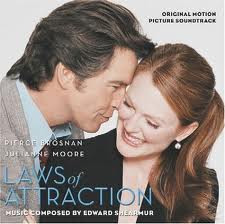
Emotional Decisions
Relationships are always between human beings, and humans have always been emotional creatures. We make decisions emotionally and then justify them rationally. Whatever the media or communication channels, we, the people, are attracted to those we know, like and trust. Online or offline, we don’t care how much you know — until we know how much you care.
If you are in sales or in network marketing, the most important ingredient in your success formula is true belief in what you are selling. Enthusiasm sells! How your prospects FEEL about how you FEEL is what makes the critical difference in sales. People are born with a built-in lie detector, and they can sense whether or not you are sincere in your belief.
ingredient in your success formula is true belief in what you are selling. Enthusiasm sells! How your prospects FEEL about how you FEEL is what makes the critical difference in sales. People are born with a built-in lie detector, and they can sense whether or not you are sincere in your belief.
If you want to be successful in sales or network marketing, the most important thing you can do is to enhance your own belief by plugging in to events, conference calls, meetings, and webinars. The word enthusiasm ends with iasm= I am sold myself. If you cannot get truly excited about what you are selling, you might as well quit.
The most effective tool for building your business is event promotion. We used to say the key to success was to get “butts in the seats.” Nowadays, the seats may be virtual (as in webinars), but plugging in, and getting others plugged in, is still the key to the emotional people business of network marketing.
Ursula Amon wrote a valuable post called, “Are You Plugged IN?,” on her blog. She covered the various ways to plug in very well. Plugging in is connecting to the flow of energy, like electricity, as well as information.
One of the best things about true network marketing, online or offline, is the win-win relationships. To quote Zig Zigler, “Help enough other people get what they want, and you will get what you want.”
Sales and internet marketing, as opposed to networking, have the potential to be win-lose games. The seller wins, whether or not the buyer wins.
The reason there are laws against “enticement” with income-claims is that actual results depend on the talents and efforts of the buyer. Many people want to believe that they can buy their way to success, and many marketers are happy to imply that they can.
Honestly, I have resisted the temptation to make and sell my own information products, because I have thought that there is already sufficient information available. I am still focused on learning more than
 teaching. There may be a small kernel of truth in the old saying that, “Those who can do, and those who can’t teach.”
teaching. There may be a small kernel of truth in the old saying that, “Those who can do, and those who can’t teach.”
As a professional networker I have never been a fan of so-called “network marketers” making MOST of their money from selling CDs, books, or training seminars to their starving fans. They are one of the reasons MLM has a bad rap. Essentially they were really just marketers, period. Like infomercial salesmen, they make their money whether or not their customers make money.
Granted, some of them have good training, and there is nothing inherently wrong with selling information products. But call it like it is, direct selling is selling, not networking.
I prefer real networking, based on leveraging trust and influence from relationships, because I win in proportion to how much they win. In other words, if our income comes from MLM “overrides,” we must help others to earn income in order for us to be paid upline bonuses. It is a win-win situation.
Of course, good training has value, and value is the basis of free enterprise, but I have seen too many cases of people getting rich selling information to people who did not benefit much. Unfortunately, most information products are never used. That is why I quit selling home study courses, even though at one time I was the second highest producer in the USA as a Distributor for Achievement Motivation Institute/SMI.
I admit that, just as in network marketing, the buyers may have not worked (and they say “it didn’t work”). “Caveat emptor.” But at least in MLM the financial incentive is based on helping people win, rather than just taking their money regardless.
Posted in Business Relationships Social Media Relationships Uncategorized by .
Oct 10
30
Alliance, Tribe, and Syndication
Alliances, tribes, and virtual teams are popular among internet marketers today. SEO has incentivized reciprocal tribe syndication beyond the normal reasons to cooperate. Personally I have been wrestling with my entrepreneurial tendency to focus on my own creative projects, rather than to contributing a lot of time as a team player. I’m just being honest and authentic here.
Please don’t get me wrong; I love helping people as much as the Lone Ranger did. And I have always understood the values of synergy and leverage (the essence of networking), but I was usually the team leader or the “Chief of the Tribe,” if you will. I have never been inclined to be a groupie, and yet I respect the power of tribal alliances. I joined The Unified Tribe, and I fully intend to participate actively. For me, joining someone else’s tribe “takes some getting used to.”
The whole internet itself is a giant showcase of synergy. It began as a “free-world” defense network, evolved into a free global information resource, and then in the nineties was colonized (no pun intended) by individual enterprise. By 1998 eCommerce was the next big thing. In the gold rush of the dot-com bubble, competition was king.
Balancing synergy with independence is a subject that has been on my mind a lot lately. I’ve decided that the issue of interdependence warrants a series of posts in order to cover its many facets in bite-sized articles. Katie Freiling, the “Queen of Tribes,” recently posted a delightful video about “masks” on her blog, in which she asked what we would be wearing for Halloween. It made me think about being “The Lone Ranger.” But not wanting to wear a mask, I will be Indiana Jones (I also taught in Indiana at Purdue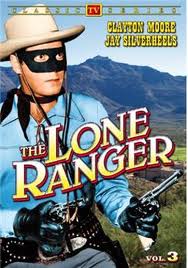 ).
).









